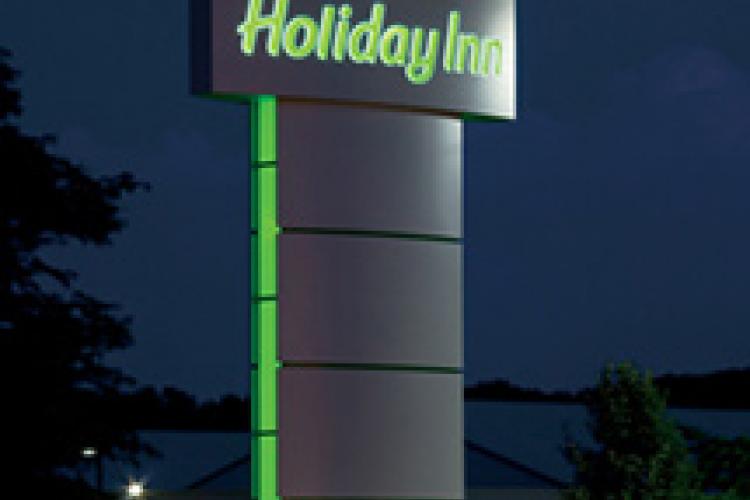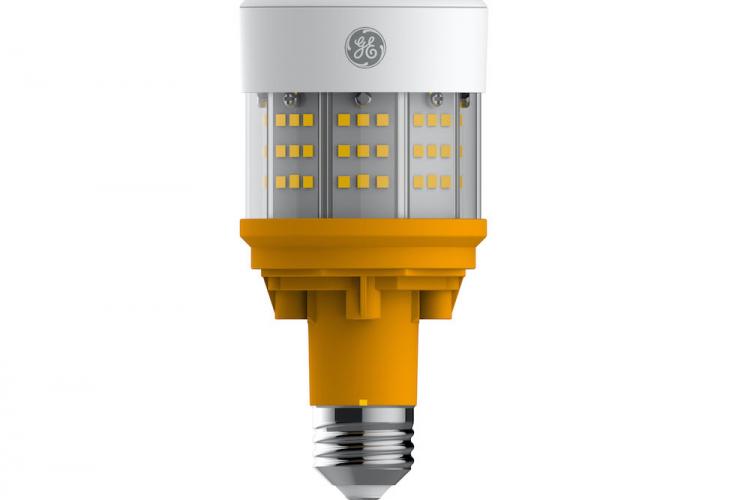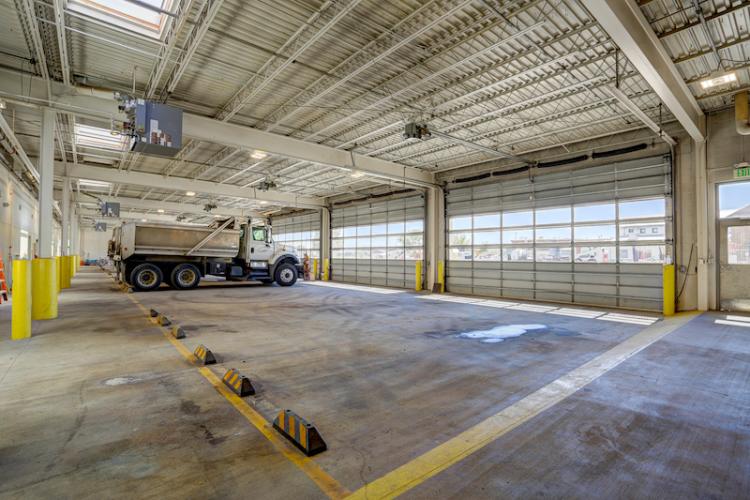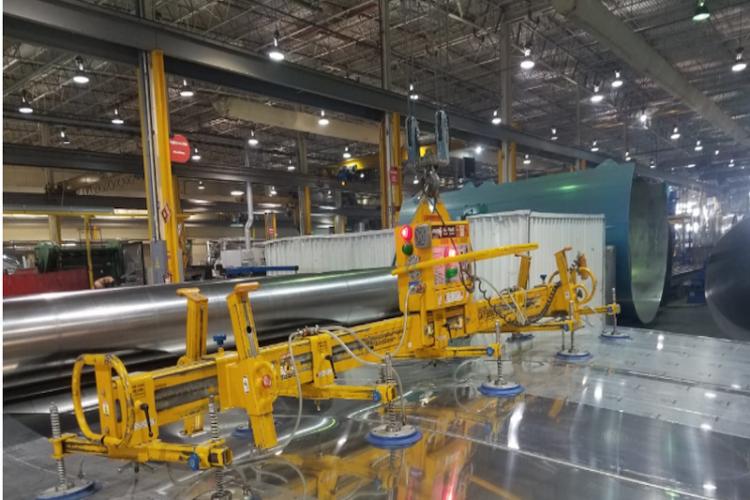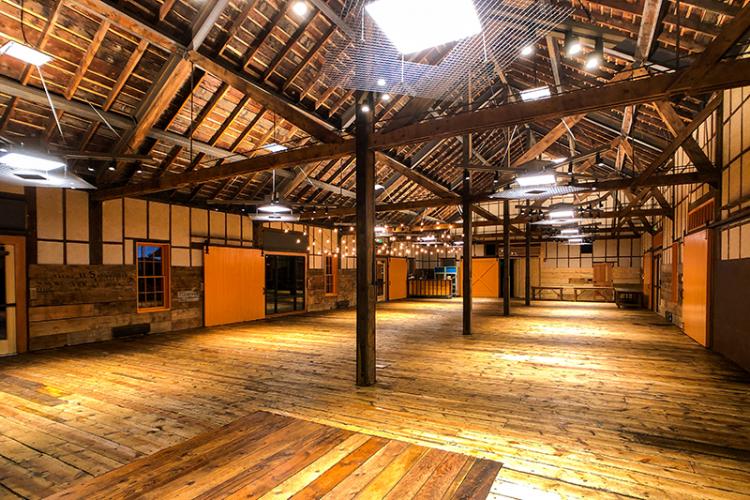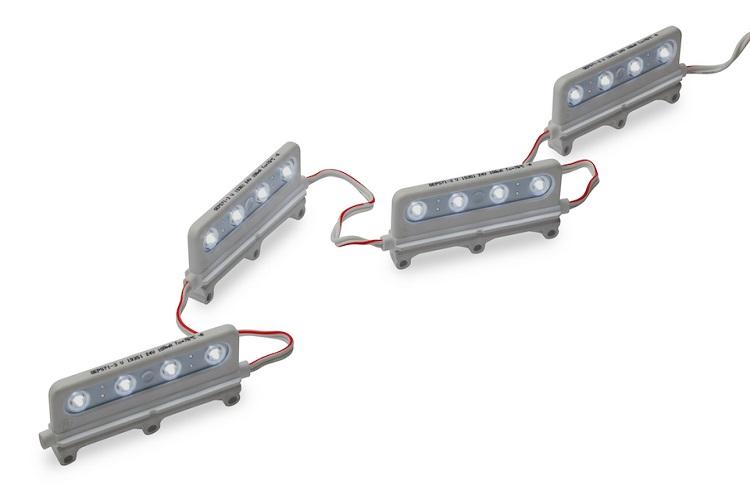Outdoor LED Lighting Offers Hotel Owners Extended Savings
Outdoor LED Lighting Offers Hotel Owners Extended Savings
Current explores new options hotel owners have that can cut energy and maintenance costs by thousands, even millions of dollars a year.
Increasingly, hotel owners, property managers and lighting designers are turning to light-emitting diode (LED) technology.
In fact, according to a report by global management consulting firm McKinsey & Company*, the LED adoption rate is expected to surge in the hospitality sector to about 80 percent in 2020.
Often guest rooms are the first consideration in energy-efficient hotel lighting, but as resort owners are learning, savings can also begin when the day ends. Today there are many options for illuminating signs and parking lots with outdoor LED systems that can cut annual lighting costs by thousands of dollars, even millions for large chains like Holiday Inn—saving more than $4 million a year after switching to LED lighting in new signs at more than 3,200 locations.
Property owners love LED area lighting for its energy-saving potential. In fact, new outdoor LED fixtures can pay for themselves in only a few years. LED lighting can also mean fewer calls to service troublesome fluorescent and neon lighting systems in hard-to-reach signs.
Signage Delivers Brand Visibility and Savings
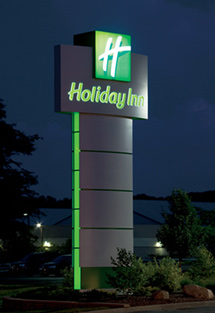
Because outdoor signage is often illuminated more than 10 hours a night, reliably lit signage is critical for maintaining brand consistency in the minds of consumers. Today many properties are switching to LED lighting, not just for energy savings, but for substantial maintenance savings as well.
Holiday Inn updated outdoor signage in an effort to drive brand consistency across thousands of properties worldwide with evenly illuminated channel letters and box signs. A redesign of the iconic brand logo required new exterior signage for more than 3,200 Holiday Inn locations. The project involved more than 20 sign manufacturers creating 9,300 channel letter and box signs—over 270 lighting configurations ranging from 11 inches to as high as 8 feet.
Holiday Inn chose Current's Tetra® LED technology to light its new signs. Current's energy-efficient sign lighting system provides highly uniform and reliable illumination that saves the company an estimated $4.4 million annually—about $3 million in maintenance reductions and $1.4 million in electricity savings, compared to previous fluorescent and neon systems. Holiday Inn has achieved an estimated 52 percent kilowatt hour (kWh) reduction with signs that are lit an average of 12 hours per day, 365 days per year. Current's Tetra LED systems also reduce the maintenance burden typically associated with fluorescent and neon sign lighting. Box signs in particular tend to be difficult to access—often a bucket truck and service team must be dispatched to change tubes or make repairs. LED lighting systems, lasting approximately four times the life of a typical fluorescent tube, can virtually eliminate maintenance for years to come and can perform better in cold weather, operating dependably at temperatures less than 50° F unlike fluorescent lighting that tends to dim in cold weather.
Parking Lot Lighting Offers Clear Savings
LED lighting in parking lots and garages offers the potential for significant savings. Property owners accustomed to high-intensity discharge lighting (HID) are increasingly attracted to longer-life LED alternatives that also offer opportunities to illuminate areas more efficiently. Metal halide and high-pressure sodium (HPS) fixtures tend to create “hot spots” of light directly under the pole, leaving distant areas dark. LED fixtures, because of their superior optical control, can provide even illumination across the parking lot while producing fewer overall lumens and using significantly less wattage.
Marriott International installed outdoor LED lighting at its headquarters in Bethesda, MD. The installations have enriched lighting quality, heightened employee security and improved energy efficiency, according to Marriott.**
Following a lighting audit of nearly 45 acres of parking space, Marriott made the change to Current's reliable, energy-efficient LED technology. Current's Evolve™ LED Area Lights, and Evolve LED Garage Lights, using advanced reflective optics to distribute light evenly, now provide uniform illumination in parking lots and garages and have reduced energy use by 580,000 kWh a year—a projected $70,000 savings.
Additionally, by employing Current's lighting control system that incorporates motion sensors, Marriot is saving another $11,000 a year. This system increases light levels to 100 percent when activity is detected while leaving it at 40 percent when the garage is vacant.
When Less Means More Appealing
Like Marriott, when evaluating and comparing lighting designs, it is important to consider not just average light levels but also uniformity of illumination (ratio of maximum to minimum)—the same principles recommended by the Illuminating Engineering Society (IES). Even at lower average light levels, more evenly lit spaces may be perceived as brighter and more appealing. As noted, the ability to better control light distribution with LED fixtures can greatly improve uniformity while minimizing hot spots, glare and light trespass.
In new parking lot designs, an LED layout can require far fewer poles to be installed. Eliminating just one light pole can save between $4,000 and $8,000 in related expenses from trenching to running conduit to pouring concrete to wiring.
Outdoor LED lighting fixtures can also provide dimming capabilities, superior color rendering, less light pollution and mercury-free lighting along with significant reductions in maintenance. No matter what your present parking lot lighting scheme, it's likely that IES standards for proper illumination can be met with fewer lumens and lower watts using LED lighting fixtures.
Interested to learn how your organization can benefit from energy management solutions? Contact Current to find a solution that works best for you.
References
* McKinsey & Company; Lighting the way: Perspectives on the global lighting market; August 2012
** New lighting configuration assumes lower light output with improved directionality and uniformity as opposed to previous lighting arrangement.


